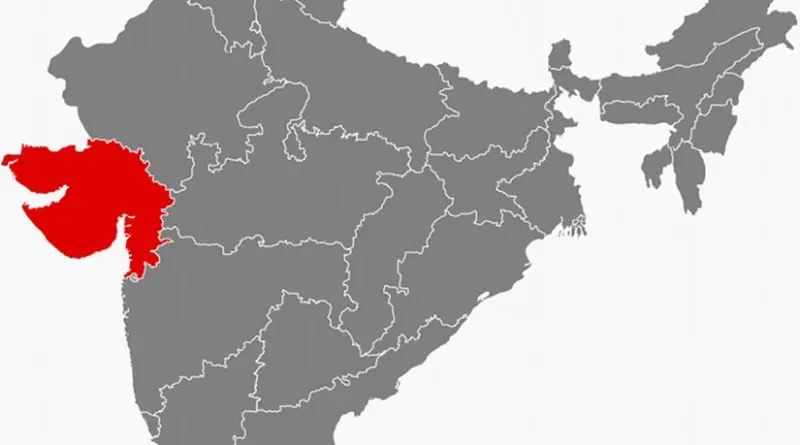Gujarat Vibrates On Development With Foreign Investment, Despite Demonetization – OpEd
The Vibrant Gujarat – Modi magic to mesmerize foreign investors – is upbeat amidst demonetization mayhem. Foreign investors are unnerved. 8th series of Vibrant Gujarat, to be held in January 2017, is expected to glitter with the overwhelming participation of foreign investors. 7th series of Vibrant Gujarat was attended by delegates from 110 countries. Almost similar or even more number of countries are expected to attend the 8th summit, embracing high hopes for investment, which are bolstered by upsurge in Indian GDP – the highest in the world.
Gujarat, despite being a geopolitical investment risk zone because of its bordering with Pakistan and engulfed by the desert on the western front, excelled all the states in India in attracting foreign investment . It also edged out Chinese key investment zones in alluring foreign investment. In 2015, FDI projects announced in green-field projects in Gujarat was US $ 13.4 billion, which left behind Maharashtra ( US$ 8.3 billion) and Karnataka ( US$ 4.9 billion ) and the Chinese key zones like Shanghai Municipality ( US $ 10.6 billion ), Guangdong ( US $ 4.5 billion ) and , Jiangsu ( US$ 9.53 billion), according to Financial Times’ think tank FDI Intelligence ,
The FDI investment in Gujarat (based on green-field projects announced) witnessed a three-fold jump within five years. Till 2011, Gujarat was the place for conventional industries. Textiles , dye intermediates and pharmaceutical were the major industries under private sector.
The year 2012 was the watershed for industrial revolution in Gujarat under the Chief Minister –ship of Narendra Modi. Gujarat earned the legacy for foreign investment. There was a dramatic accession in FDI in Gujarat.
The success story of Gujarat as FDI legacy started with Japanese giant Maruti-Suzuki deciding to set up a giant automobile plant in the state. Besides Maruti-Suzuki, a slew of other auto MNCs, like Ford, General Motors and Honda ( two-wheeler) are in the queue to shift their expansion plans in Gujarat. Along with auto giants, a number of auto parts companies with Japanese joint ventures are likely to set up their manufacturing units in Gujarat.
The traditional industries were left in the back -foot and the modern industries made a jump start with larger participation of foreign investment. The faster growth in automobile, telecommunication and metallurgy are the cases in point. Gujarat is set to become a new hub for automobile , leaving behind Haryana and Tamilnadu.
Why did Gujarat outplay others in garnering FDI and infused a momentum in the growth of manufacturing under the leadership of Mr Narendra Modi, as Chief Minister. The crucial factors to enliven foreign investors were creation of investment friendly bureaucracy and the availability of land. Red tape in India , which triggered xenophobia among foreign investors in the world market, tapered with the timely approvals and better governance in Gujarat. In a joint survey by World Bank and DIPP (Department of Industrial Policy and Promotion, India) , Gujarat topped in India in Ease of Doing Business in 2014-15.
Gujarat achieved a commendable success in electricity supply. All villages in Gujarat are now connected with electricity. No State has been successful to provide electricity to all villages in their respective state. Mr Modi’s is Jyotigram Yojana (Planning for all electricity) turned a big success for electricity supply in the State.
In non-conventional energy, Gujarat has become the country leader. It emerged the leader for solar energy in the country. It contributes two-third to the total solar energy produced in the country. It established Asia’s largest Solar Park in Charanka village in Patan district. Gujarat is the second biggest producer of wind energy in the country. It contributes about 15% to the total wind energy produced in the country
Another attraction for investment , created during Mr Modi’s regime , was the set up of a major port by Adani group, namely Mundra Port. With the initiative of Mr Modi, the first private sector major port, Mundra Port, was set up in 2005. This opened up a big channel for trade and commerce in Gujarat. Hitherto, Kandla Port in Gujarat, established by Central Government, was dealing with government imports, such as oil and refinery products.
Mr Modi introduced a novel scheme for manufacturing development, known as Special Investment Region scheme for industries. The scheme was statutorily enacted by The Gujarat Special Investment Regions Act 2009. Under this scheme, 13 potential areas were identified for promote industrial projects. Each SIR is more than 100 square KM . DMIC area covering Gujarat will be one of these potential areas. Another important SIR is Dhorela Special Investment Region. It is located proximity to Ahemdabd- the capital of Gujarat – at distance of 109 km. The unique feature of Dholera is that it is the first SIR to be designed under the proposed DMIC project.
Mr Modi also focused on city development and mass transport system. He took initiative to introduce BRTS ( Bus Rapid Transport System ) in Ahmedabad to provide better transport system for the rising population in the city. It started its operation on October 14, 2009. It should be noted that Gujarat does not have metro facilities. Probably, BRTS is a substitute for metro for the time being.
Today, in the industrial map of the country, Gujarat beams with land of manufacturing. It contributes about 16% to the country’s industrial output . Manufacturing in Gujarat accounts for about 27 percent its GDP, against the national average of 15. It scored highest GDP growth of 12 percent in 2015-16 against the national average of 7.5 `percent. One can thus see that Gujarat is today a challenge to other states and foreign investment in Gujarat acted as catalysis for the challenge.
* S. Majumder, Adviser, Japan External Trade Organization ( JETRO), New Delhi. Views are personal.

